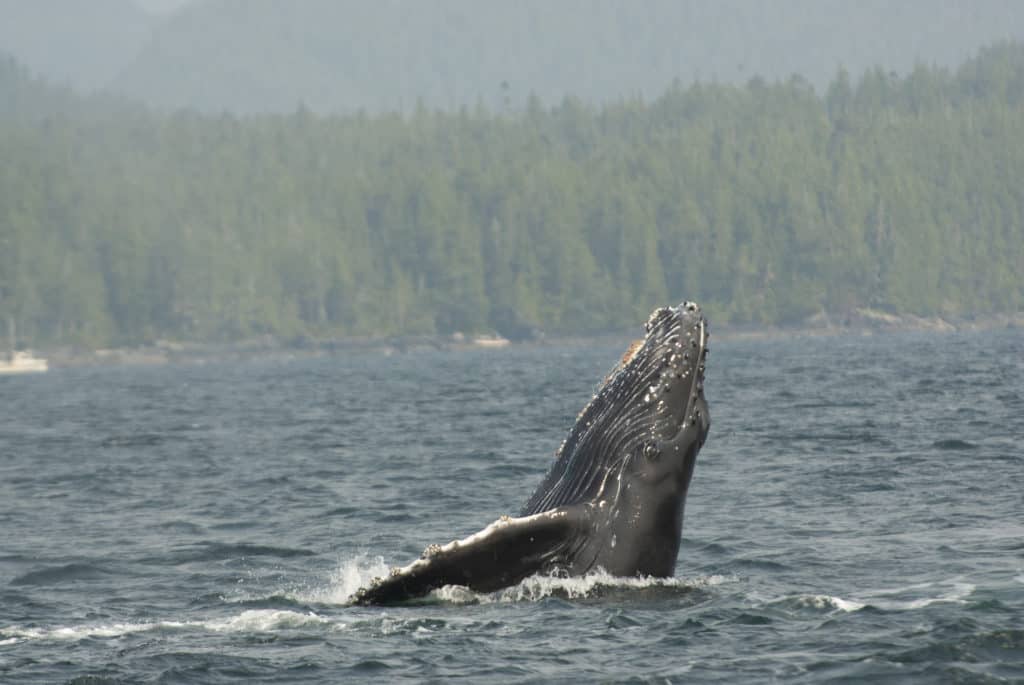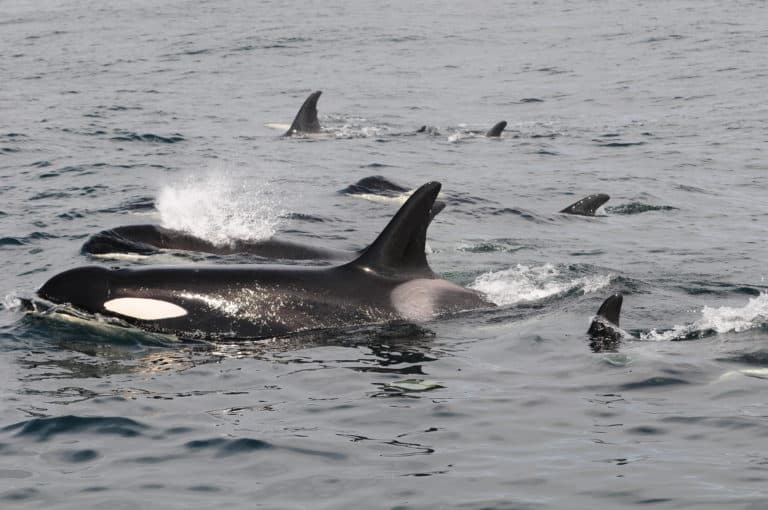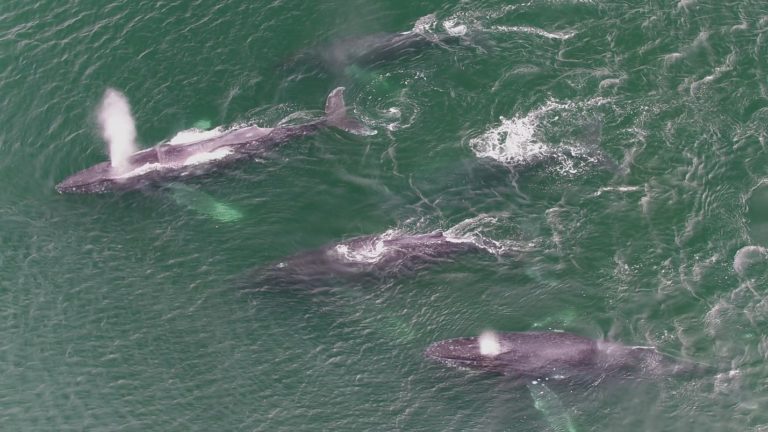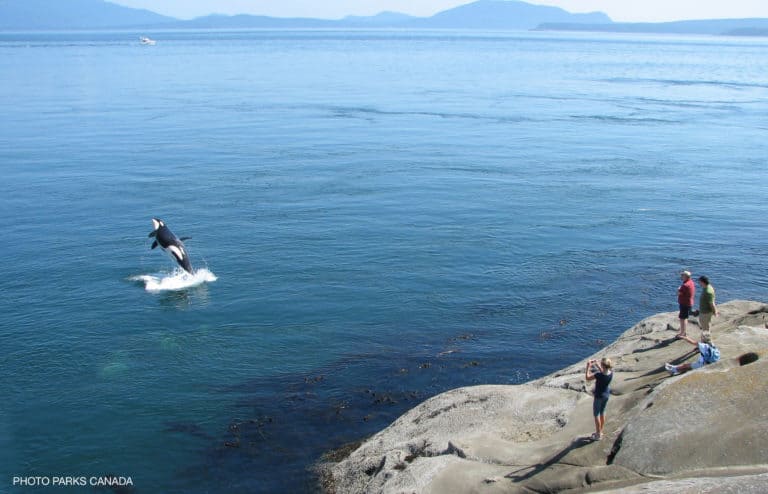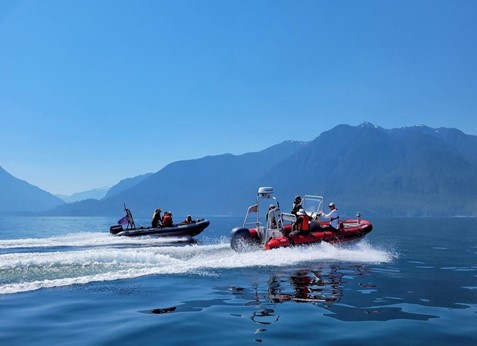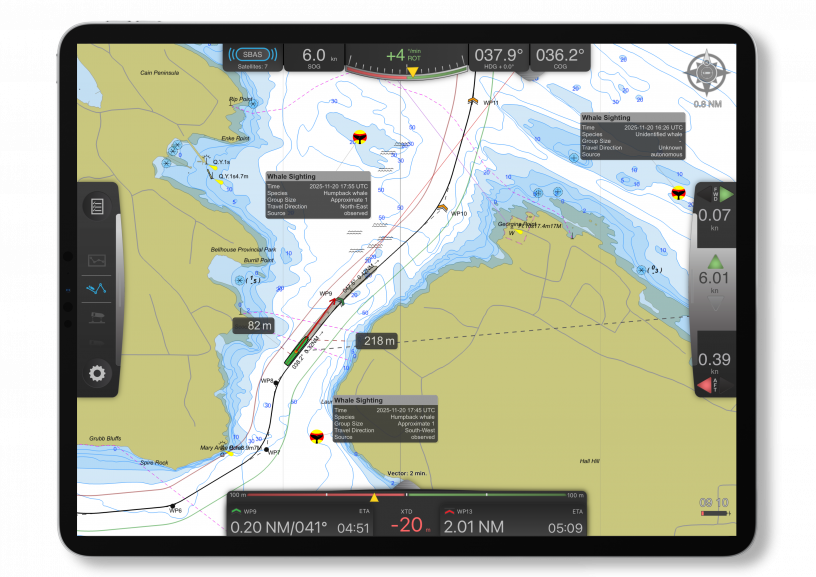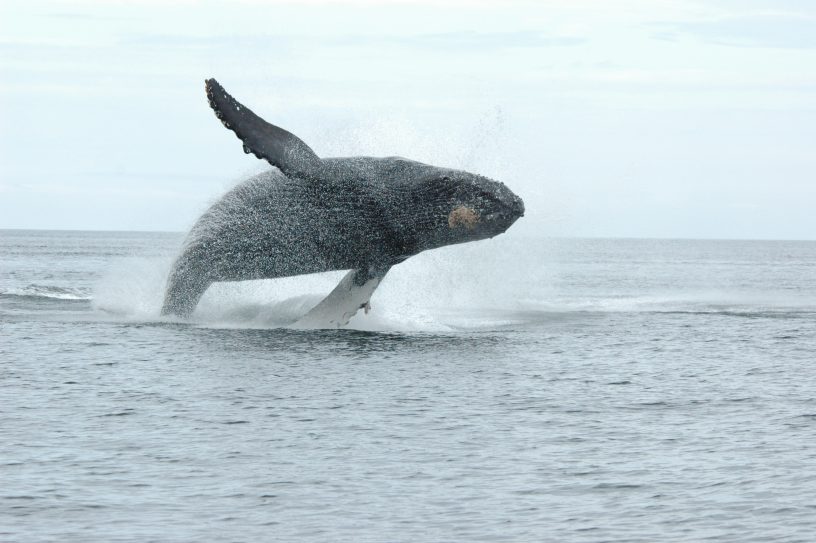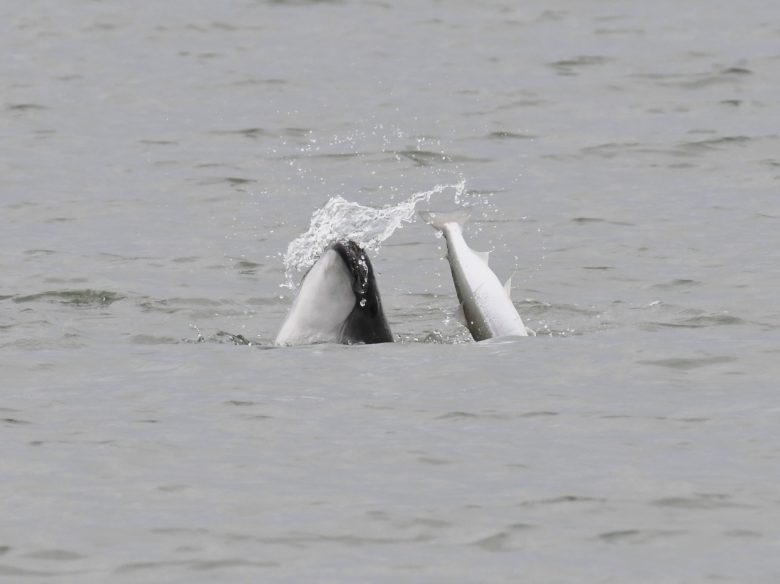When Giants and Ships Collide: Why Vessel Strikes Are Rising and What We Can Do About It
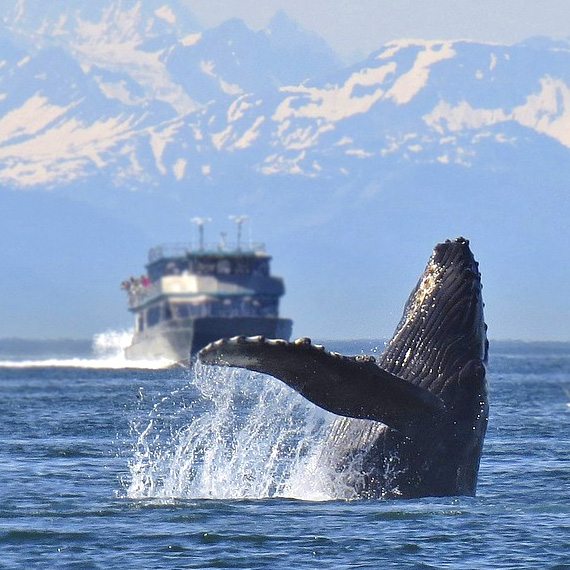
Since September 2025, three humpback whales have been struck by vessels in British Columbia’s coastal waters. One of them, a well-known whale named Midnight (BCX1940), was killed on September 17 in Wright Sound. A month later, Skipper was severely injured by a passenger ferry near Vancouver’s English Bay. And just over a week ago, another humpback was hit, likely fatally, by a whale-watching vessel.
This sudden surge in collisions is alarming, but it’s also likely just the tip of the iceberg.
Why Vessel Strikes Are a Growing Threat
Vessel strikes are one of the leading causes of death for large whales worldwide and continue to rise. This isn’t surprising, global ship traffic has skyrocketed – up 300% in the past two decades – bringing more vessels into critical whale habitats and migration routes.
The North Pacific is a prime example of this overlap. Every year, humpbacks migrate thousands of kilometers between warm breeding grounds in Hawai‘i, Mexico, and Central America to their northern feeding grounds (read more in our recent blog). After being nearly wiped out by commercial whaling, humpbacks have been making a comeback in B.C. waters since the late 1990s. Today, over 1,100 individual whales have been documented in the Salish Sea alone.
But with more whales and more ships sharing the same waters, the risk of collisions is rising dramatically.
“It’s ultimately an odds game,” says Dr. Chloe Robinson, Strategic Advisor & Technical Lead for Ocean Wise’s Whales Initiative. “Imagine 10 people running across a highway versus 1,000—you’re going to hear about more accidents because there’s more overlap than ever before. But these collisions aren’t inevitable. Fatal vessel strikes should not be an unavoidable part of human activity.”
The Invisible Crisis
Most whale-vessel collisions go unnoticed. Mariners rarely feel the impact, and whales often disappear without a trace. This “no body, no crime” reality means researchers can’t fully measure the scope of the problem. That’s why these recent cases – where the whales were identified – made headlines. Seeing a name and a fluke photo creates empathy that faceless statistics never can.
But empathy alone won’t solve the problem.
What’s Being Done, and Why It’s Not Enough
Globally, several strategies aim to reduce vessel strikes:
- Voluntary speed reductions (like NOAA’s program off the U.S. West Coast)
- Re-routing ships away from whale hotspots (as seen in the Bay of Fundy for North Atlantic Right Whales)
- Real-time whale alert systems, such as Ocean Wise’s Whale Report Alert System (WRAS), which operates across the West Coast of North America.
Each approach helps, but none is perfect. Slowing down reduces fatal collisions but doesn’t improve whale detection. Real-time alerts are invaluable, but useless if vessels are moving too fast to react. Avoidance zones work, providing they’re updated frequently and enforced. The perfect recipe for reducing fatal collisions with whales is often a blended approach of one or more of these strategies.
How WRAS Helps and Its Limits
In B.C., WRAS sends about 3,000 alerts every month to organizations like BC Ferries and Hullo Ferries. Over 80% of these alerts come from public sightings submitted via the Whale Report app. Since launching in 2018, WRAS has issued more than 85,000 alerts.
So why do strikes keep happening? Three main reasons:
- Limited sightings – Whale reports drop during darkness and bad weather, leaving critical gaps.
- Barriers to adoption – Some mariners can’t access WRAS due to phone restrictions or poor cell coverage.
- High-risk speeds and routes – Many ferry and whale-watching routes were set before humpbacks rebounded. Vessels often travel well above 10 knots, giving little time to avoid whales.
Ocean Wise is tackling these challenges by working with partners to install hydrophones and infrared cameras in the water, integrating WRAS into shipboard navigation systems and, eventually, into Automatic Identification Systems (AIS). This will make whale alerts part of standard operating procedures, boosting safety for whales and mariners alike.
What You Can Do
Protecting humpbacks requires action from everyone—public, mariners, industry, and government.
Public
- Report whale sightings via the Ocean Wise Whale Report App. Every report helps prevent strikes.
- Learn safe boating practices at whalesafeboating.org.
Mariners
- Request WRAS training and access via the app or email [email protected].
Maritime Industry
- Invest in infrared and other whale-detection tech for night and poor weather.
- Re-route vessels to avoid whale hotspots—even small detours save lives.
- Share navigation system details to help integrate WRAS fleet-wide.
Government
- Implement voluntary slowdowns and avoidance zones. Currently, Canada has no humpback-specific regulations. A 10-knot speed limit near Vancouver could dramatically reduce fatal strikes.
Thanks to the generous support of Transport Canada, Fisheries and Oceans Canada, DP World Canada, Prince Rupert Port Authority, Tides Foundation, Port of Vancouver, Quiet Sound, National Fish and Wildlife Foundation, and BC Ferries for helping maintain and enhance WRAS.
Posted November 3, 2025 by Nic Schulz
